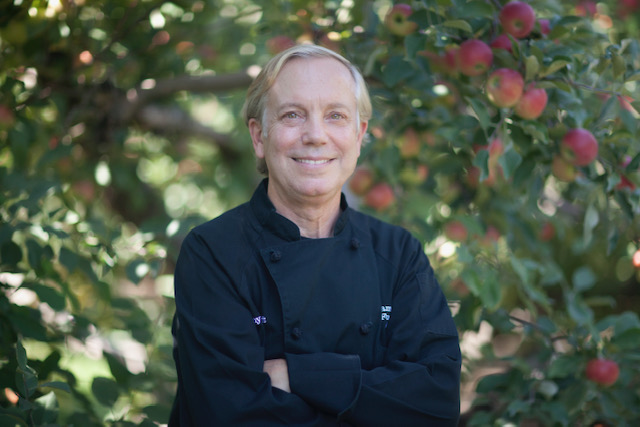When people think of chefs, they might imagine a child standing on a stool, helping their grandmother stir sauce in a small, warm kitchen. But Jimmy Schmidt’s path to the culinary world wasn’t a straight line through tradition. It was more like a winding forest trail—one that started in the wild landscapes of Illinois and later crisscrossed through science labs, European kitchens, and the minds of culinary greats.
Jimmy Schmidt was born in Champaign, Illinois, in 1955. His early years were shaped by the natural world around him. As a child, he was not just eating food—he was discovering it. Schmidt spent much of his time exploring the wild woods and riverbanks with his family, where they would hunt for mushrooms, pick herbs, and foraging for asparagus in the spring and wild nuts in the fall, gathering what nature had to offer. These weren’t just afternoon outings; they were lessons in taste, texture, and respect for food that grows outside of grocery stores.
That early exposure to wild foods wasn’t just a weekend hobby. It became a foundation—a way of thinking that stayed with Schmidt through every turn of his life. While many chefs begin their journey in the kitchen, Schmidt’s started outdoors, with his feet in the dirt and curiosity in his hands. It’s hard not to wonder if, even then, he sensed food could be more than just fuel. Maybe it was already becoming art, science, and story all in one.
Yet, cooking didn’t come next. Schmidt’s first academic steps took him into a very different world: electrical engineering. He studied at the University of Illinois, diving into a field that focused on systems, mechanics, and logic. At first glance, engineering and cooking seem miles apart. But in Schmidt’s world, they weren’t. Both involved precision. Both required understanding how things work. And both demanded curiosity. It’s not hard to imagine Schmidt looking at a circuit board with the same intensity he would one day give to a plate of food—examining how each piece fit, how everything connected.
Still, engineering wasn’t where he stopped. Something called him back to food, but now with the same discipline he had picked up in his studies. Schmidt left Illinois and went to France, enrolling at the Université Aix-en-Provence-Avignon in the south of the country. It was here that he began to formally train in culinary arts and viniculture. The decision marked a shift—from the structured world of engineering into the creative, expressive world of food.
But Schmidt didn’t just want to cook. He wanted to learn deeply. So, he studied under Madeleine Kamman, a French chef and teacher known for her tough standards and deep knowledge of technique. Kamman was more than a mentor; she was a force. Her approach to food combined tradition with exactitude. And that worked well for someone like Schmidt, who had already trained himself to think both like a scientist and an explorer.
These experiences in France added layers to Schmidt’s evolving view of food. He was learning the classics—yes—but he was also starting to push boundaries. The child who once picked mushrooms in the woods was now working under some of the best chefs in the world, absorbing not just recipes, but philosophies.
By the time Schmidt returned to the United States, he wasn’t just a cook with a few certificates. He was someone with a deep-rooted connection to nature, a scientific mind shaped by engineering, and a refined skill set polished by two of France’s best culinary figures. It’s no surprise that he would go on to innovate, challenge norms, and create a culinary legacy rooted not just in technique but in a personal philosophy that began years earlier among the trees and rivers of Illinois.
There’s something deeply human about Schmidt’s early journey. It’s not the kind of story that jumps off the page with flashy drama. But it’s the kind of story that feels real. You can picture the young boy crouched in the woods with his family, trying to figure out which plants were edible. You can imagine the college student questioning how electrical signals traveled through wires, and later wondering how flavors moved through a dish. It’s the story of someone who didn’t just choose a profession. He chose to understand.
Looking at Schmidt’s life, one can see how these early experiences didn’t just prepare him for a career in food—they shaped his philosophy entirely. They gave him a view of food that connected the wild and the refined, the technical and the artistic, the childhood curiosity and the adult discipline. And maybe that’s why his later work would feel so different—so thoughtful. Because at the heart of everything, Schmidt was never just making meals. He was making sense of the world, one ingredient at a time.

